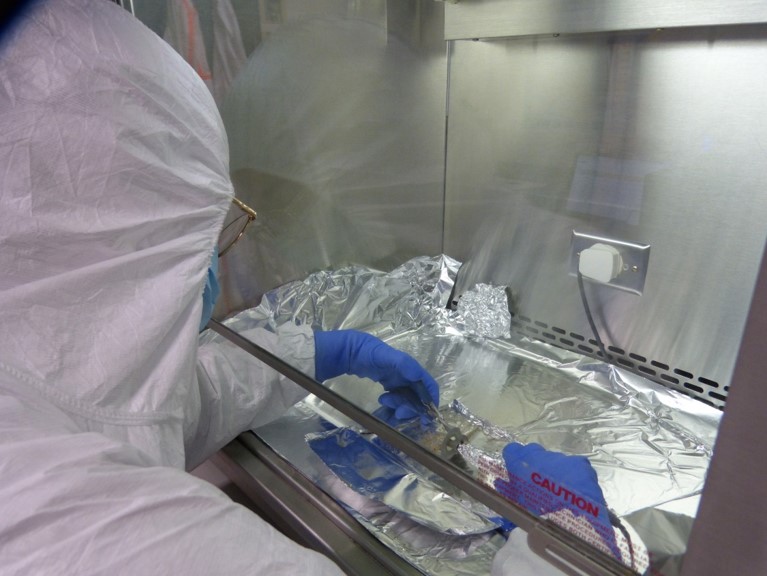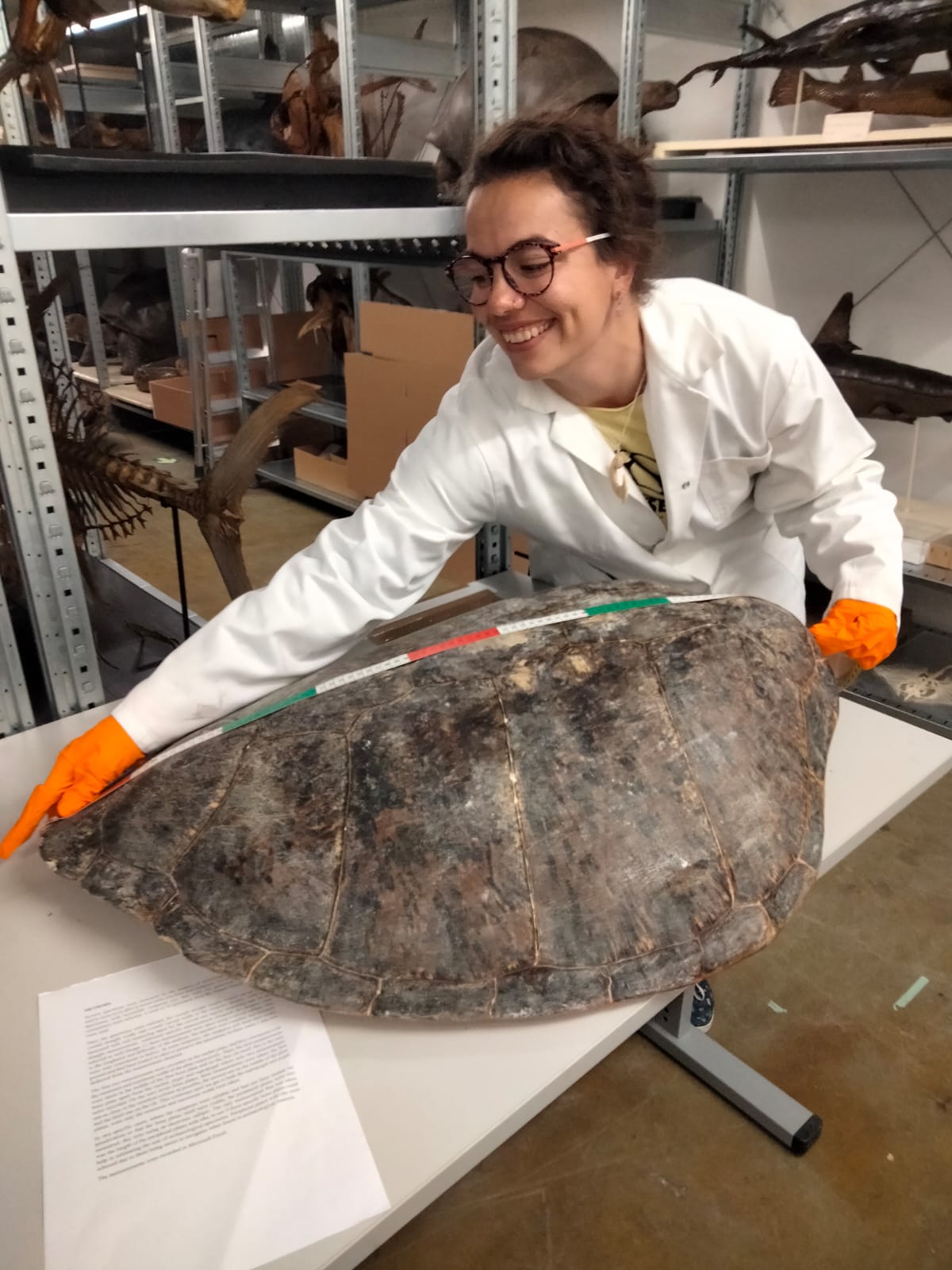Archaeology PhD students apply Nobel Prize-winning DNA research
On 10 December, the Swedish doctor and biologist Svante Pääbo will be awarded the Nobel Prize for Medicine. His research is of great significance to countless researchers in a wide range of fields. Two such researchers are Willemien de Kock and Jolijn Erven, who are both carrying out their PhD research at the Groningen Institute for Archaeology at the UG.
Text: Marjolein te Winkel
The green sea turtle, historically hunted for use in turtle soup, is rare and is listed as a protected species. Archaeologist Willemien de Kock is researching what the population of green sea turtles in the Mediterranean Sea near Turkey and Lebanon looked like 5,000 years ago. Were numbers low even back then, or has soup-making and intensive fishing taken its toll?
In the meantime, in another room at the Groningen Institute for Archaeology, Jolijn Erven is researching the emergence of animal husbandry in the Netherlands. When did humans start keeping animals, specifically pigs and cows? And how have these animals evolved from wild creatures to the species that they are now?

What does this have to do with Nobel Prizewinner Pääbo?
Both PhD students are searching for the answers to their questions using old genetic material: De Kock is extracting DNA from 5,000-year-old green sea turtle bones, and Erven from 5,500 to 7,500-year-old prehistoric pig and cow bones. They are thus entering the field of paleogenetics, the field to which doctor and biologist Svante Pääbo has contributed significantly over the past 35 years.
He started in 1985 with his own PhD research, in which he managed to extract DNA from a 2,400-year-old mummy. In the years thereafter, he worked on further developing techniques to study the genetic material of extinct, prehistoric human and animal species. Pääbo was the first person to map out the complete genetic composition of Neanderthals, and he has been able to extract DNA from countless extinct animal species. In 2010, by studying the DNA of an excavated finger bone, he discovered a completely new human species, which had lived in what is currently Siberia around 30,000 years ago.
Very short DNA strands
This weekend, Pääbo will be awarded the Nobel Prize for Medicine for his sensational discoveries in the field of the DNA of extinct human species. ‘Together with his colleagues, he has laid the foundation of what is possible nowadays’, says De Kock.
That doesn’t mean that extracting DNA from old bones is easy. Erven: ‘Modern DNA consists of two long, interwoven strands. But the bones that I am studying are thousands of years old, and if any DNA is even remaining, then it is in very short fragments.’ Together, all these short fragments paint a picture of the ancestors of today’s farm animals: the aurochs and prehistoric wild boar from the Mesolithic Period, one such example is their coat colour.
From wilderness to pastures
This genetic information also helps to determine when humans started keeping pigs and cows. This process was gradual and different for each animal. ‘Aurochs were so called prey animals, and did not approach human settlements themselves’, says Erven. ‘Humans captured the aurochs and over time this turned into controlled breeding. Wild boar, on the other hand, were attracted to human settlements, mostly for human food waste (e.g. rubbish and leftover meat).’
There is also a difference in the genetic changes of both species, explains Erven. ‘The genetic differences between prehistoric wild boar and today’s pigs are very large. Pigs have interbred with other populations, both wild and domesticated. That makes it much harder to determine the domestication and evolution of pigs.’ The genetic changes for cows are more controlled and modern European cow breeds are still genetically similar to the first domesticated cows.
For her research, Erven is using comparable material from other parts of Europe. The entire genome—the complete genetic composition—of multiple prehistoric pigs from various regions helps to study where these first pigs came from. ‘With this material, I can see whether there are genetic similarities, and I can thus see with which other members of their species the pig populations in the Netherlands have come into contact in different parts of Europe.’

And what about the green sea turtles?
Willemien de Kock has to base her research on substantially less genetic information. ‘For a long time, only one complete genome was available for green sea turtles. This is gradually increasing.’
De Kock is extracting DNA from fragmentedbones that were found by the shores of the Mediterranean Sea, where turtles have always returned. From this bone, she is attempting to reconstruct parts of the genome of green sea turtles. The fact that DNA in bones survives less well in warm climates, such as the Mediterranean, does not make it easy. ‘The bones contain less than one percent of DNA.’
By uncovering the genetic information of green sea turtles from the Bronze and Iron Ages and by comparing this with that of current green sea turtles, De Kock can gain insight into the emergence of the population in this region and the changes that the populations have faced over the past 5,000 years. ‘This allows us to see the extent to which current turtle populations look like those from back then. The larger the difference in DNA within a population, the larger the population was, and the better their abilities were to adapt to circumstances’, explains De Kock.
All thanks to Pääbo
One of Pääbo’s scientific legacies is the ability to check for DNA contamination. De Kock: ‘DNA can be contaminated by the modern DNA of researchers themselves, or by that of others. If that happens, then research results are also contaminated, and you face the risk of drawing the wrong conclusions. Nowadays, we can prevent this by checking to see whether the DNA in certain samples is young or old. That is all thanks to the work of Pääbo.’
| Last modified: | 02 May 2024 2.05 p.m. |
More news
-
12 March 2025
Breaking news: local journalism is alive
Local journalism is alive, still plays an important role in our lives and definitely has a future. In fact, local journalism can play a more crucial role than ever in creating our sense of community. But for that to happen, journalists will have to...
-
11 March 2025
Student challenge: Starting Stories
The Challenge Starting Stories dares you to think about the beginning of recent novels for ten days.
-
11 March 2025
New: Sketch Engine, tool for language research
Sketch Engine is a tool for language research, which can also be used for text analysis or text mining.
